Two More Types of Hummingbirds at The Lodge
Black-chinned and Rufous Hummingbirds were active there
Migration season continues in southern Arizona as I saw when I visited the Santa Rita Lodge in Madera Canyon two weeks ago. I've already shared photos of the Broad-billed Hummingbirds with you. There were also a number of Black-chinned Hummingbirds at the feeders. The photo below shows you how this species got its name. The males have a black chin that has a clean edge, or line, at the bottom against white feathers. Remember that the feathers on the throats of many male hummingbirds are pigmented black. The structure of the feathers helps to 'create' some brilliant color in the right light. In this photo, the Black-chin in a belly-flop pose is not showing us any special colors.
However, when the hummingbird is at the right angle to the sun, a vivid purple necklace appears at the bottom of those black feathers. The hummingbird still has a black chin, but it is lined in iridescent purple. Black-chins also have a black head and an all black bill.
One more slight turn and the glowing purple disappears. Female Black-chins do not have colored feathers on their necks. They have the same slim profile and same black bills that are fairly straight. Black-chinned Hummingbirds are found in a variety of habitats throughout most of the western US during the summers, but generally head to the western parts of Mexico during the winters.
Another Black-chinned Hummingbird hovered near a different feeder later in the morning. In that light its head did not look dark black in this photo, but it was black in real life. This bird is a male, as its gorget shows. A female would have white tips to her tail feathers but the male's tail feathers do not show that.
Another very common hummingbird was the Rufous Hummingbird. Generally this species is known for being very protective of the feeders it claims and will spend time chasing other hummingbirds away. During migration, sometimes the volume of hummingbirds at any feeder discourages the Rufous from that type of behavior as it is outnumbered so much.
Most of the Rufous Hummingbirds we saw were either females or immature males- it can be hard to tell them apart. So I will refer to the birds in these photos as female/immature. Immature male Rufous Hummingbirds do not have a full, orange gorget that adult males have. They do have a beginning of a gorget, as the speckled throats of the birds in these photos show. Yet female Rufous Hummingbirds also may have a small bit of red on their throats. Female/immature Rufous Hummingbirds will have a green back and rusty (or rufous) flanks.
Here is a good look at the flanks of the Rufous Hummingbird. We did not see any adult males that morning. The male Rufous Hummingbirds usually migrate sooner than the female or the immature Hummingbirds. They want to get to their destination ahead of the other Hummingbirds and claim the best territories.
As always, the AllaboutBirds site is a great resource for information on either Black-chinned Hummingbirds or Rufous Hummingbirds.
And, yes, there were yet other species of Hummingbirds to be found in Madera Canyon that morning.........


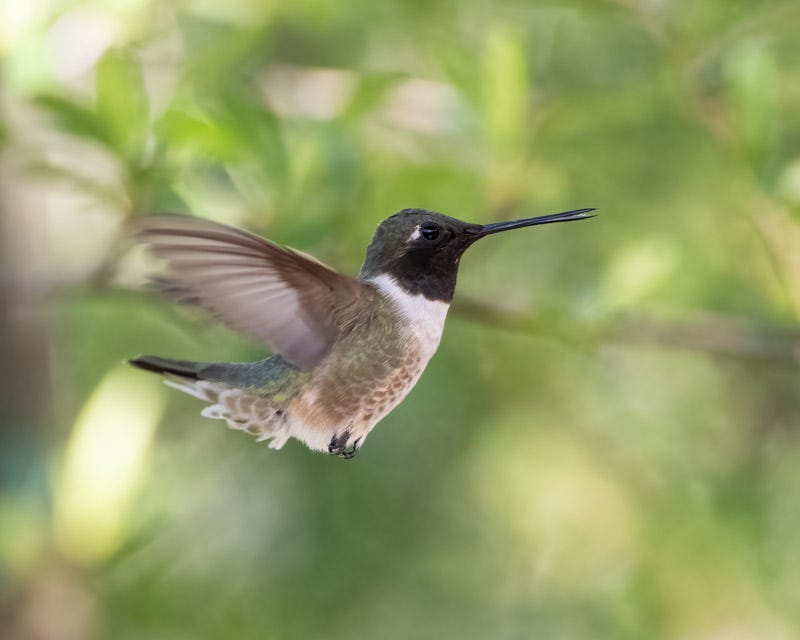

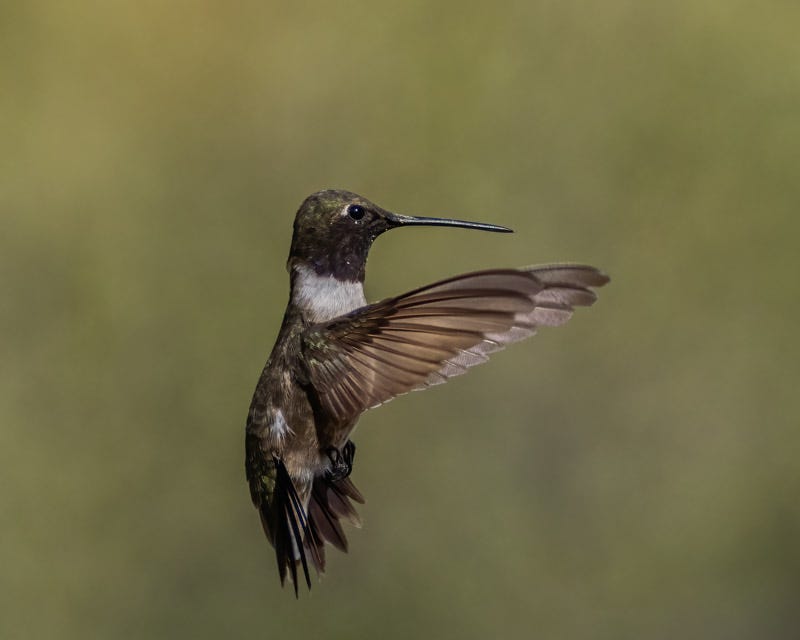
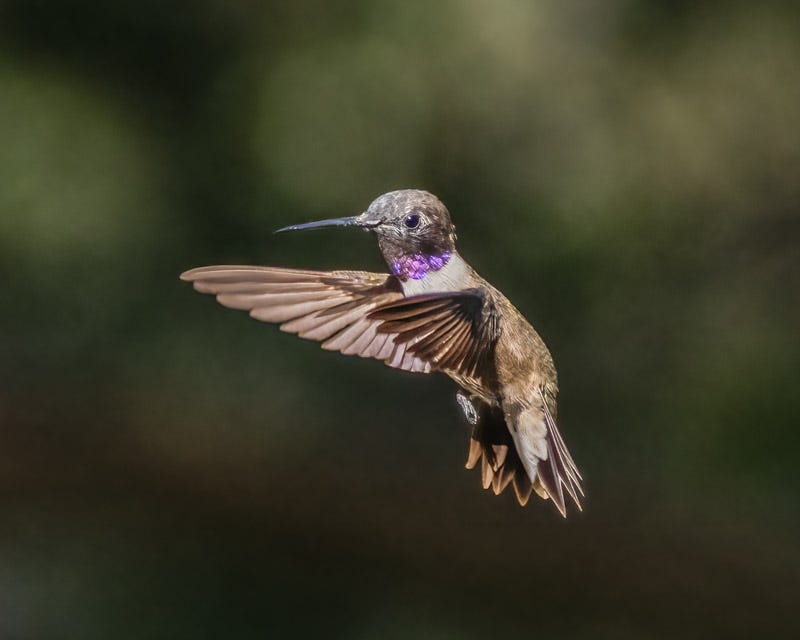
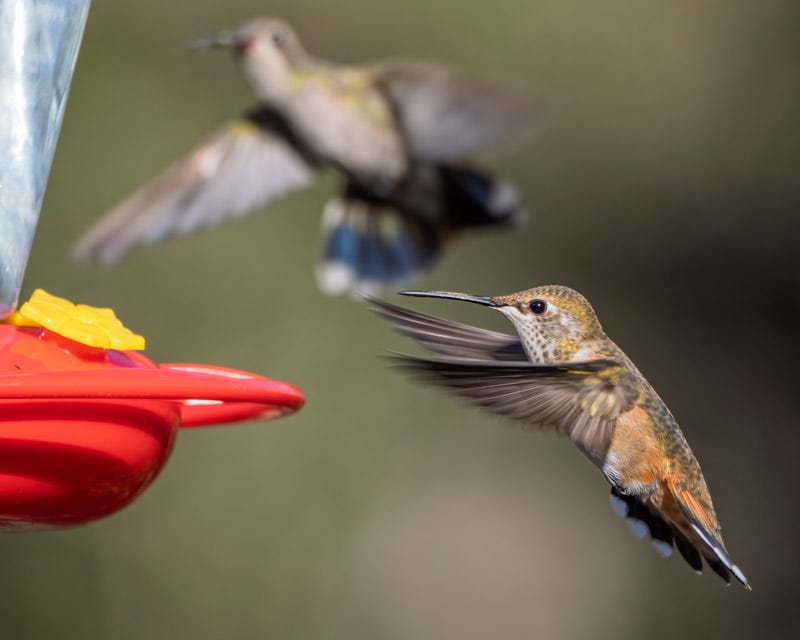
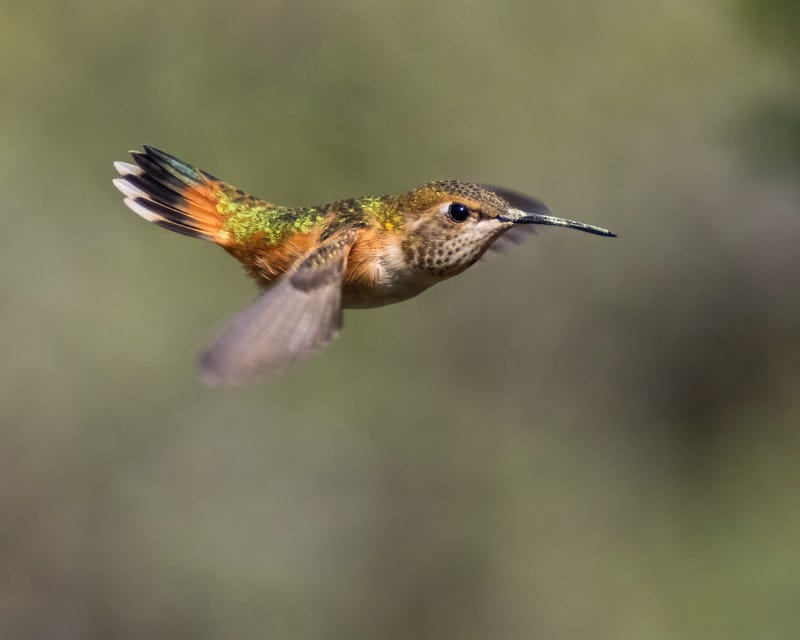

Dan,
Your consistently excellent photography and ornithology makes this old man a happy camper when I look at the photographs and read the information you include. Thank you very much for your memorable skill.
Maybe the adult males were on a golf outing or some other male hummingbird activity 🤷🏼♀️